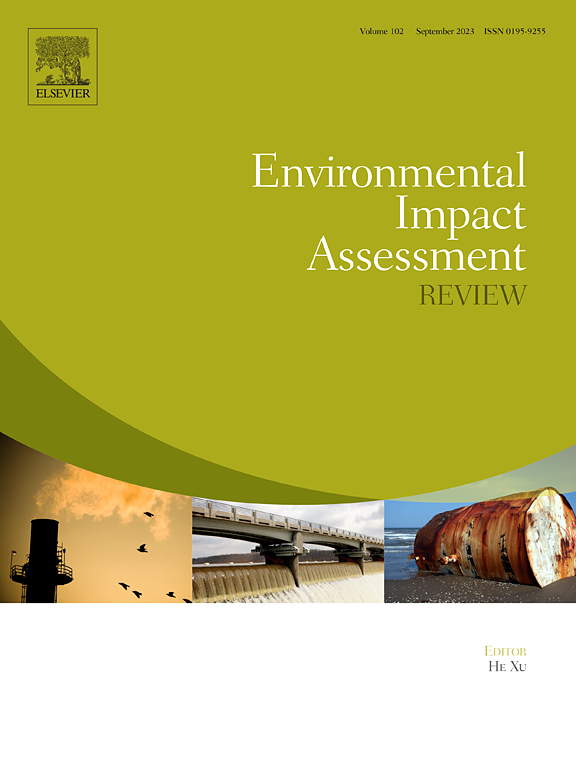Nitrogen Footprint accounting and food sustainability: Insights from the Italian wine industry
IF 9.8
1区 社会学
Q1 ENVIRONMENTAL STUDIES
引用次数: 0
Abstract
Anthropogenic perturbation of the nitrogen cycle poses significant environmental and social challenges, highlighting the need for effective nitrogen management in sustainable food systems. The Nitrogen Footprint (N-Footprint) offers an innovative metric to quantify reactive nitrogen (Nr) emissions and trace their environmental pathways.
This study refines a previous N-Footprint accounting framework to include both direct and indirect Nr emissions throughout the life cycle, providing a comprehensive perspective on Nr dynamics. The methodology is applied to a case study of Italian wine production, covering vineyard cultivation, winemaking, and bottling processes. Results indicate total emissions of 7.67 g Nr per 0.75 L wine bottle, with the vineyard phase accounting for 64.4 % of the overall impact, largely due to intensive fertilizer use. Water is identified as the most affected environmental compartment (55.7 % of emissions), primarily as a result of nitrate leaching.
Additionally, the study quantifies the Virtual Nitrogen Factor (VNF) to evaluate nitrogen use efficiency. Italian wine production demonstrates relatively high efficiency (2.28 g Nr per gram of nitrogen intake) compared to other fruit-based products. However, the lack of a standardized N-Footprint methodology hinders cross-sectoral comparability. This research calls for the development of nitrogen-specific Life Cycle Assessment (LCA) standards to promote sustainable agricultural practices.

求助全文
约1分钟内获得全文
求助全文
来源期刊

Environmental Impact Assessment Review
ENVIRONMENTAL STUDIES-
CiteScore
12.60
自引率
10.10%
发文量
200
审稿时长
33 days
期刊介绍:
Environmental Impact Assessment Review is an interdisciplinary journal that serves a global audience of practitioners, policymakers, and academics involved in assessing the environmental impact of policies, projects, processes, and products. The journal focuses on innovative theory and practice in environmental impact assessment (EIA). Papers are expected to present innovative ideas, be topical, and coherent. The journal emphasizes concepts, methods, techniques, approaches, and systems related to EIA theory and practice.
 求助内容:
求助内容: 应助结果提醒方式:
应助结果提醒方式:


